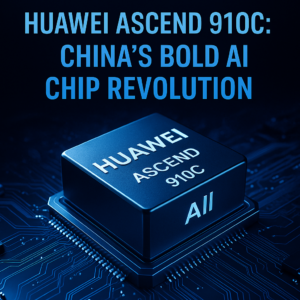Navigating the Crossroads of AI and Global Trade Tensions: Nvidia’s Dilemma
In the ever-evolving landscape of artificial intelligence, few companies have made as significant an impact as Nvidia. Known for pioneering advancements in AI and gaming chips, Nvidia has become a linchpin in the tech industry, supplying essential components that power innovations across various sectors. However, as the company navigates its path forward, it faces an intricate challenge: a Chinese antitrust investigation that underscores the nuanced interplay of global trade tensions, technological leadership, and market strategies.
Nvidia’s Role in the AI Ecosystem
Nvidia’s growth trajectory in the AI domain has been nothing short of spectacular. The company’s GPUs are critical for deep learning applications, making them indispensable for AI research and deployment. In 2023, Nvidia’s AI market share was estimated to be over 80%, illustrating its dominance in the sector. Their flagship product, the A100 Tensor Core GPU, is considered a gold standard in AI processing, capable of executing complex computations that are foundational for developing advanced AI models.
The Chinese Antitrust Probe: A Geopolitical Chess Game
The Chinese government’s decision to launch an antitrust probe into Nvidia can be seen as a multifaceted maneuver, influenced by recent U.S. trade policies aimed at curbing China’s technological ascendancy. The investigation is perceived as a retaliatory response to the U.S.’s restrictions on semiconductor exports to China, which included barring advanced AI chips from reaching Chinese shores—a significant blow to China’s AI aspirations.
The stakes are high. For Nvidia, China represents a crucial market, accounting for roughly 17% of its revenue as of early 2024. This figure, while substantial, has declined from 26% in the previous years, largely due to the ongoing trade disputes and export controls.
Strategic Implications for Nvidia
Facing the antitrust probe, Nvidia must carefully calibrate its strategy to maintain its market position while adhering to international trade regulations. Several potential strategies could be considered:
- Local Partnerships and Collaborations: To mitigate risks associated with geopolitical tensions, Nvidia could strengthen partnerships with Chinese tech firms, fostering joint ventures that align with both U.S. and Chinese regulations. This approach may also facilitate technology transfer and local innovation, which are highly valued by Chinese authorities.
- Diversification of Markets: By expanding its footprint in emerging markets and regions less affected by U.S.-China tensions, Nvidia could reduce its dependency on the Chinese market. Countries in Southeast Asia, India, and Africa present growing opportunities for AI applications, offering new avenues for growth.
- Adaptation of Product Lines: Developing China-compliant versions of its products, as Nvidia has done in response to previous export restrictions, could help the company continue its operations within the country. Such adaptations, while potentially costly, ensure that Nvidia remains a key player in the Chinese AI sector.
The Future of AI Amid Trade Tensions
The ongoing trade tensions and regulatory challenges highlight a critical reality for AI companies: the future of AI is intricately linked to geopolitical dynamics. As nations strive to secure technological supremacy, companies like Nvidia must navigate a complex web of policy changes, market demands, and competitive pressures.
For the global AI community, these developments serve as a reminder of the importance of strategic foresight and adaptability. As AI continues to transform industries, the ability to anticipate and respond to international shifts will be paramount in sustaining technological leadership and market relevance.
Conclusion
Nvidia’s current predicament is emblematic of the broader challenges that AI companies face in today’s interconnected yet divided world. As the company maneuvers through a landscape marked by regulatory scrutiny and trade barriers, it must leverage its innovative prowess and strategic acumen to chart a course that ensures sustained growth and influence in the global AI market.
This situation not only affects Nvidia but also sets a precedent for how AI businesses worldwide might approach similar challenges in the future. With the right strategies and a keen understanding of global market dynamics, Nvidia can continue to lead in AI innovation while navigating the complexities of international trade relations.


